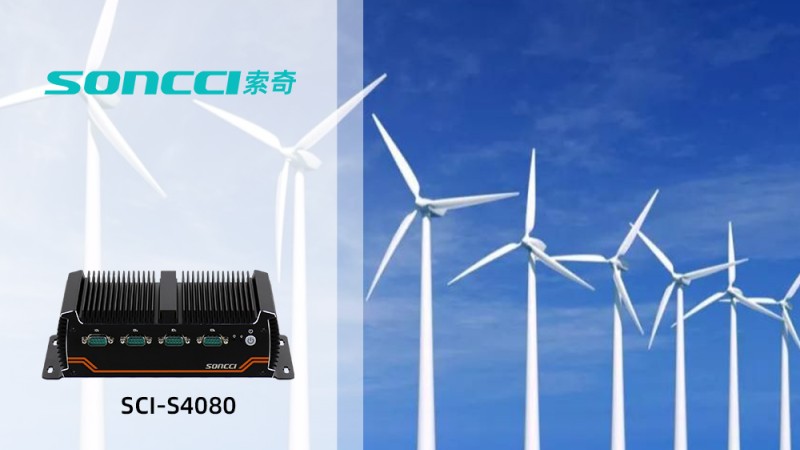
Advantages and background of wind power
As a clean, renewable form of energy, wind power has significant environmental advantages. China has abundant wind resources, especially in the northeast, northwest, southwest plateaus and coastal islands, and wind power has great development potential. With the increase of national support for the wind power industry, the wind power industry has developed rapidly.
The application of industrial computer in wind power generation
Wind turbine testing
The IPC is placed under the control console of the wind turbine and is used to test the overall data of the machine.
The sensor is connected through the expansion board to detect various data after the machine is started, so as to determine whether the wind turbine is qualified or not.
Industrial computers need to install multiple industrial software to drive various accessories of wind turbines. At the same time, connect multiple displays to display and compare data.
Remote monitoring of wind power generation
In the wind power remote monitoring system, the industrial computer, as the core hardware of the remote terminal control system (RTU), can receive and process data information from various sensors.
The industrial computer transmits data to the central monitoring room through high-speed Ethernet to achieve centralized control.
The industrial computer has strong data processing capabilities and stability to ensure the reliable operation of the remote monitoring system.
Advantages of industrial computers in wind power generation
Adapt to harsh environments
Wind farms are usually located in remote areas with harsh environments, and industrial computers have the characteristics of dustproof, waterproof, earthquake-resistant, and impact-resistant, and can operate stably in these environments.
High performance and stability
The industrial computer uses high-performance processor and memory, which can meet the needs of data processing and real-time control of wind power generation systems. At the same time, the industrial computer has a long mean time between failures to ensure the stable operation of the system.
Easy to expand and maintain
The industrial computer has rich interfaces and expandability, which is convenient to connect various sensors and monitoring equipment. At the same time, the modular design of the IPC makes maintenance and upgrades easier.
Reliable performance with wide operating temperature
Powered by intel Core processors, the SCI-S4080 features a wide operating temperature (-10 ~ 60°C), anti-static ESD, shock-resistant, fanless design and rugged construction to provide reliable performance to withstand extreme environmental conditions at wind turbine sites.
Two Realtek RTL8111 Gigabit Ethernet ports
It has two Realtek RTL8111 Ethernet controllers that provide a stable connection to the server and can transmit various types of power generation data, such as: power production, temperature, wind speed, voltage, current, and rotational speed.
Flexible I/O expansion
The SCI-S4080 supports extended I/O interfaces, including serial/USB, through which users can detect and control devices such as gate switches for wind turbine towers.
Compact size and easy installation
The space-saving compact size of 240×133×70mm makes it easy for customers to install, inspect and wire in small control cabinets.
Features:
● Support intel Core i3, i5, i7 processors, integrated intel core graphics card
● Support 1 SO-DIMM DDR3 memory slot, 2.5-inch SATA hard disk, mSATA solid state drive
● 2 Gigabit Ethernet ports, support network wake-up, diskless boot, built-in SIM card slot, optional WIFI/Bluetooth/4G module
● 4 RS232 DB9 COM serial interfaces, COM2-3 support RS485 switching, HDMI+VGA dual display output
● BIOS supports Watchdog hardware reset, power-on and power-on function
● Compact and sturdy fully sealed aluminum alloy chassis and large-area aluminum fin fanless heat dissipation structure, wide temperature (-10 ~ 60°C) stable operation
● Black/silver of the host is optional, supporting embedded, wall-mounted, and desktop installation








Leave a comment